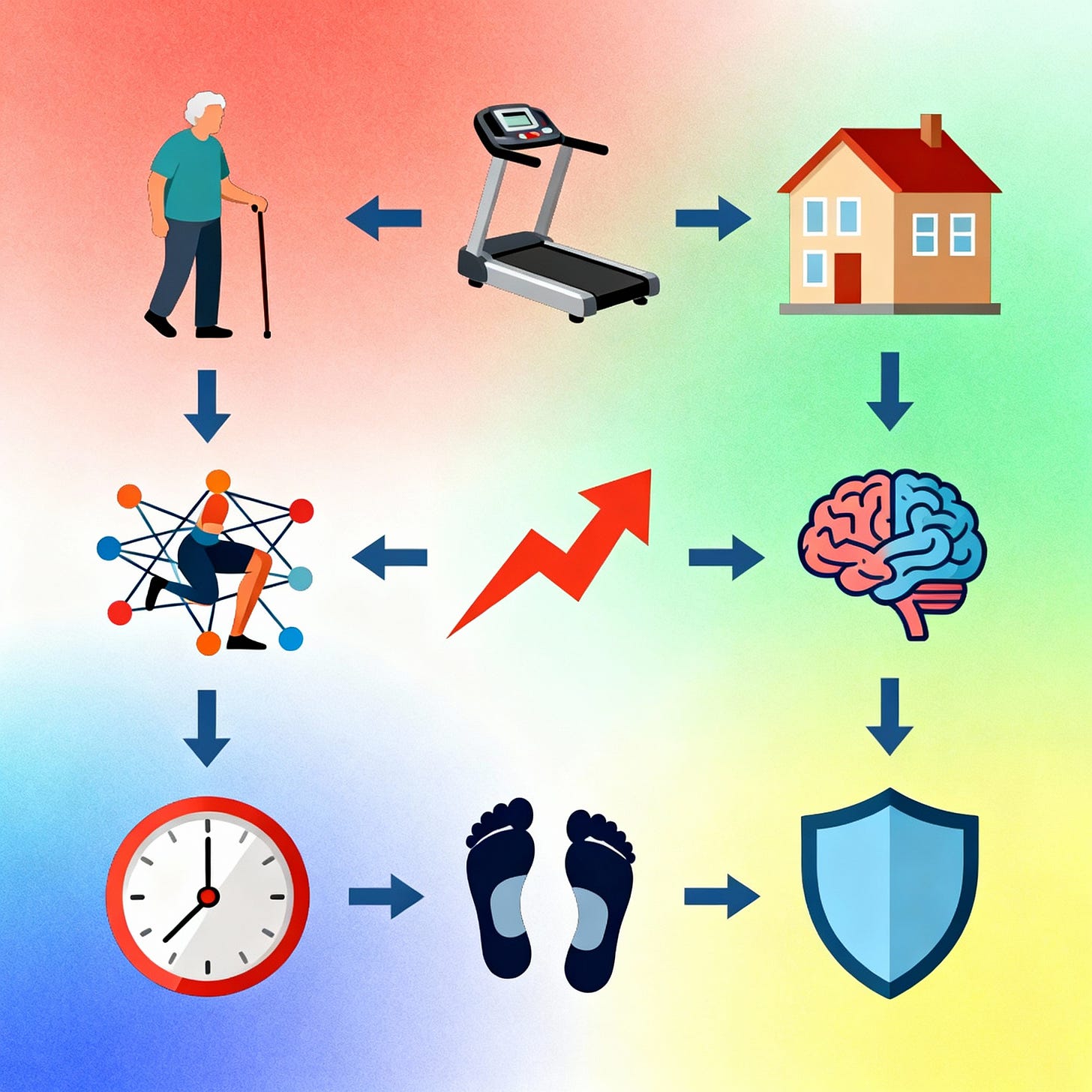Walking Pads
A Game-Changer for Stroke Survivors Getting Back on Their Feet
After a stroke, one of the toughest challenges many folks face is simply walking again. Nearly 80% of stroke survivors deal with weakness on one side of the body, which makes every step feel uncertain and exhausting. That’s where walking pads come in—these compact treadmills are solving a real problem for people trying to rebuild their strength and independence at home.
The Problem Walking Pads Solve
Here’s the thing about stroke recovery: research shows that walking exercises with higher intensity actually speed up healing, especially in those critical first three months when the brain is working hardest to repair itself. But getting to a rehab clinic five days a week isn’t realistic for most seniors. Transportation is expensive, appointments are tiring, and frankly, by the time someone gets home from a session, they’re wiped out.
Walking pads solve this by bringing rehabilitation right into the living room. They’re compact enough to slide under a bed or lean against a wall, don’t require fancy setup, and let stroke survivors work on their recovery without leaving home. Recent studies found that stroke survivors who did progressive walking exercises—building up to 2,000 steps at moderate intensity—walked 143 feet farther after just four weeks compared to standard care. That’s nearly half a football field of improvement.
Why Walking Pads Work Better Than Regular Treadmills
Traditional treadmills are bulky, intimidating, and often too fast or complicated for someone relearning to walk. Walking pads are different. They’re low to the ground, reducing fall risk, and typically max out around 3-4 mph—perfect for someone focused on steady, controlled steps rather than cardio workouts. Most models operate quietly under 45 decibels, so using one doesn’t disturb the whole household.
The diamond-patterned surfaces on many walking pads provide excellent slip resistance, and the shock-absorbing layers cushion joints that might already be dealing with stiffness or pain. For stroke survivors managing balance issues or foot drop, these features aren’t luxuries—they’re necessities.
Good Walking Pad Options for Stroke Recovery
The Merach W50 Walking Pad stands out for stroke survivors because it supports up to 400 pounds and offers a wider 16.5-inch walking surface, which gives extra stability for those with balance concerns. The 12-level motorized incline lets someone gradually increase workout intensity as strength returns, and the quiet 1.25 HP motor won’t wake a sleeping spouse.
The Urevo CyberPad gets high marks for overall reliability and safety features. Safety is one of the Urevo CyberPad’s standout features. The treadmill is equipped with a gravity-sensing automatic stop mechanism: the treadmill will automatically stop if it detects that no one is standing on it, minimizing injury risks in the event of a fall. Additionally, a safety key can be pulled to halt the treadmill immediately, and the device will also gradually stop when the “Stop” button is pressed on the remote or console. These features are specifically designed so that if someone loses their balance, the treadmill will stop running immediately. The LED display is easy to read without glasses, showing time, distance, and calories burned at a glance.
(If you buy something, I may earn a small commission to support TheSeniorTechie at no cost to you—thanks!)
What to Look for When Choosing One
Safety features matter most. Look for walking pads with anti-slip surfaces, emergency stop buttons, and speeds that start low—around 0.5 mph—so someone can ease into movement. Weight capacity is important too; many models support 265 pounds, but some go higher.
The walking surface should be at least 40 inches long and 16 inches wide to accommodate a natural stride without feeling cramped. Shock absorption is crucial for protecting joints, especially knees and hips that might already be compromised. And honestly, if it’s too complicated to set up or requires an engineering degree to operate, it’s not getting used.
Making It Part of Recovery
Starting slow is the key. Physical therapists recommend 15-20 minute sessions twice daily rather than trying to do everything at once. This approach triggers neuroplasticity—the brain’s ability to rewire itself—without causing fatigue that could lead to falls or discouragement.
Tracking progress helps maintain motivation. Whether it’s using an app or simply writing down how many minutes walked each day, seeing improvement over weeks makes the hard work feel worthwhile. Some stroke survivors find it helpful to watch television or listen to audiobooks while walking, making the time pass more pleasantly.
Working with a physical therapist to integrate a walking pad into a broader rehab plan ensures exercises complement other recovery work rather than conflict with it. Therapists can suggest specific speed settings, duration goals, and ways to safely increase intensity as strength returns.
The Real Impact
Walking pads aren’t miracle devices, but they remove significant barriers to consistent rehabilitation. They eliminate transportation hassles, work around busy schedules, and provide a safe space to rebuild confidence in movement. For stroke survivors trying to reclaim independence, that matters more than any fancy feature ever could.
The bottom line is this: stroke recovery is tough enough without adding logistical nightmares. Walking pads bring professional-level rehabilitation equipment into homes where it’s actually accessible and usable. They’re helping seniors take back control of their recovery, one step at a time.


